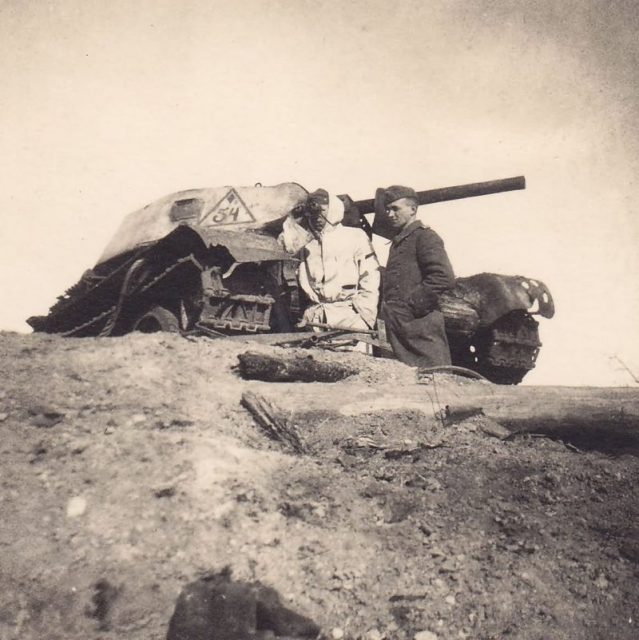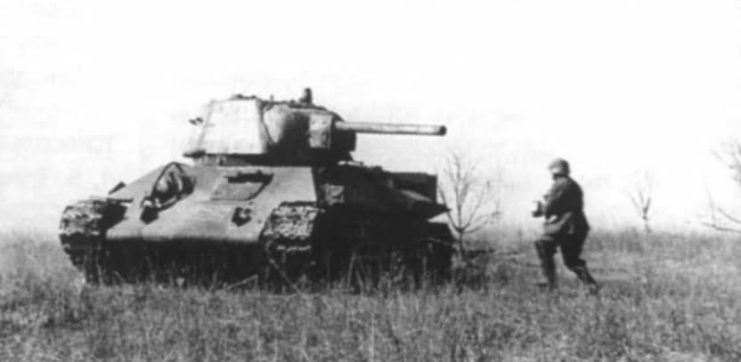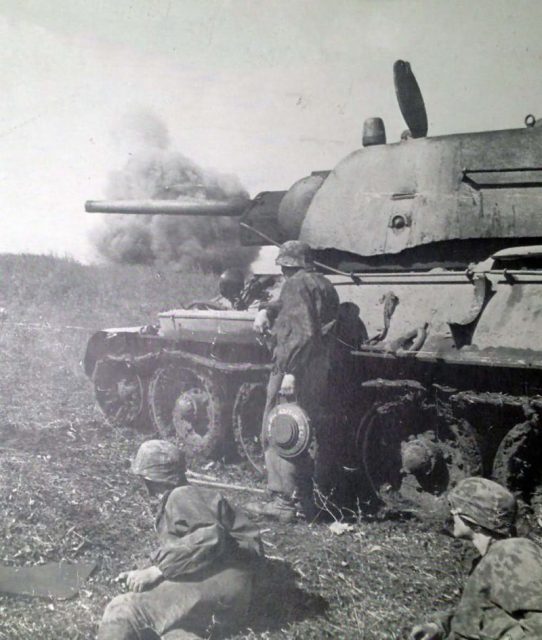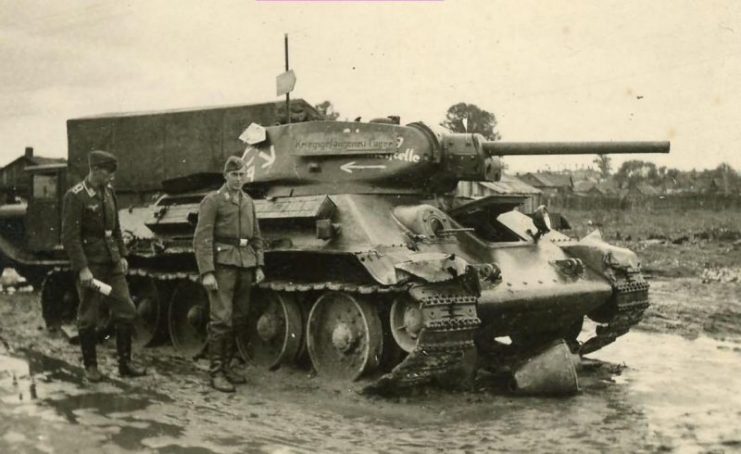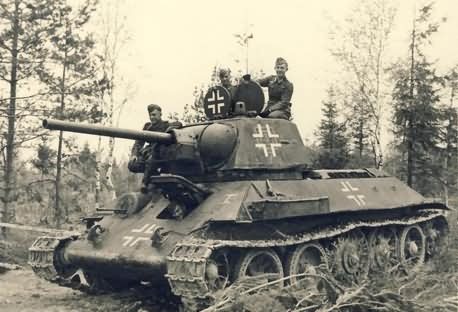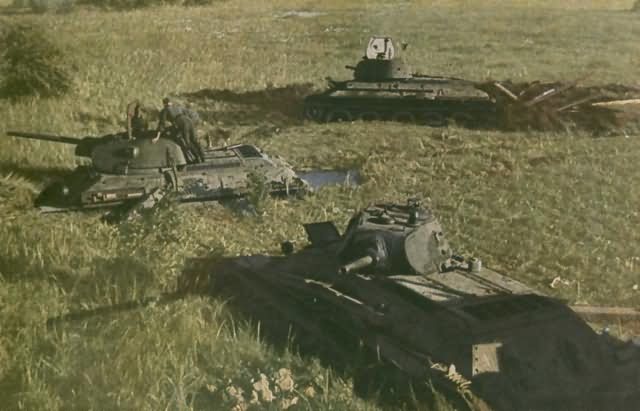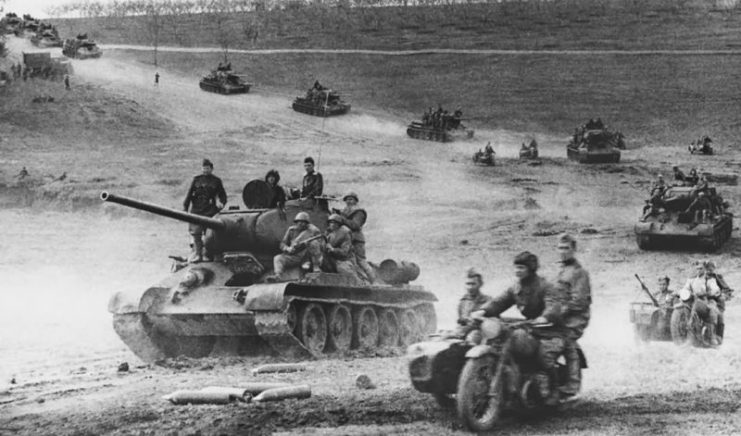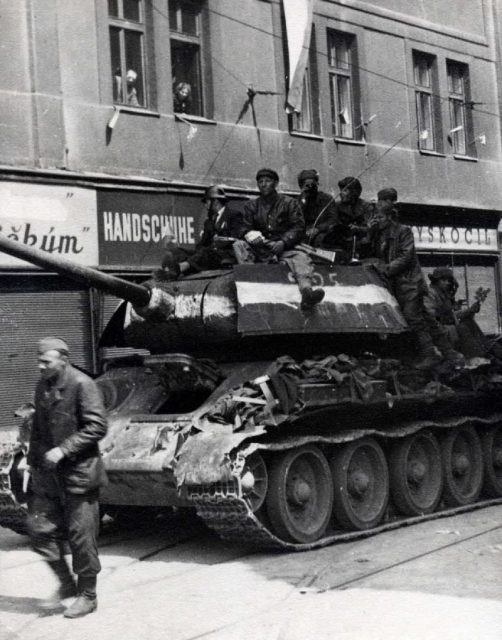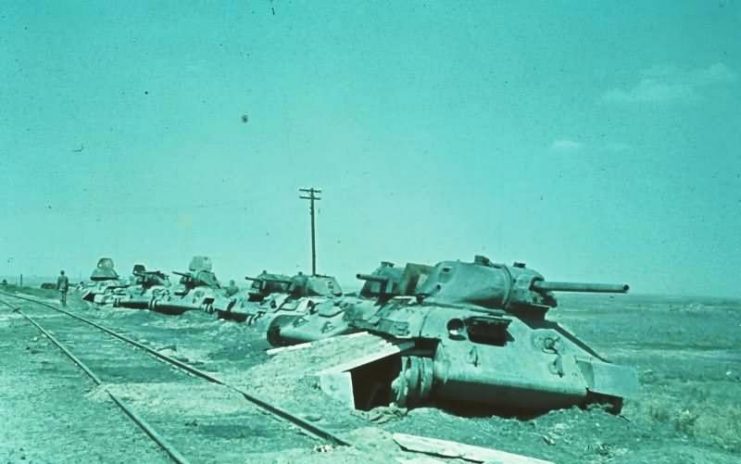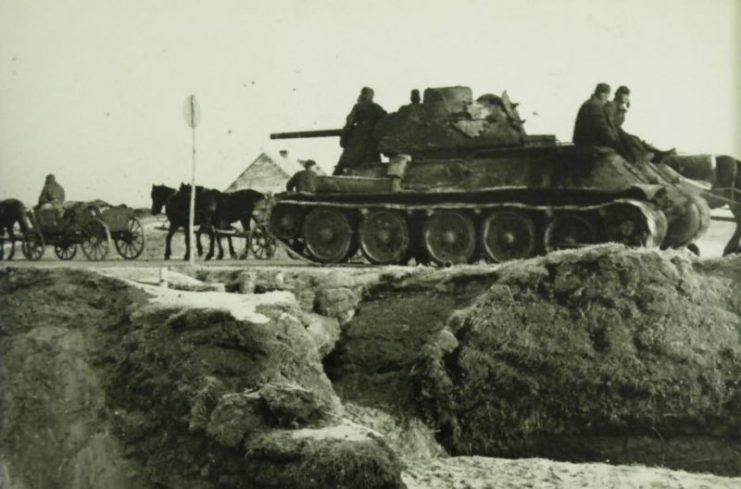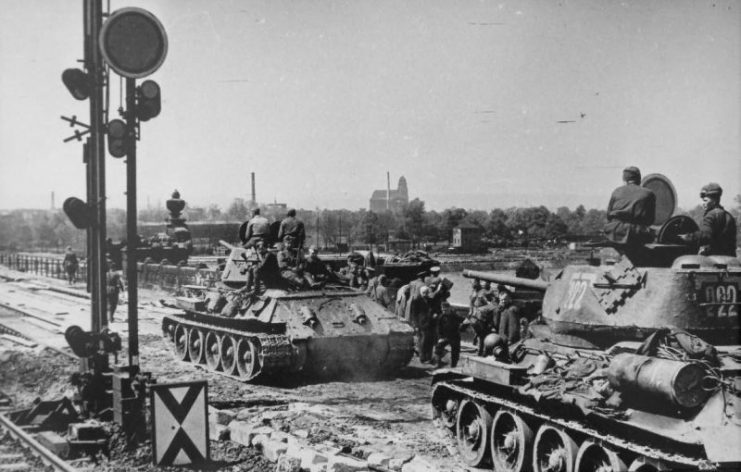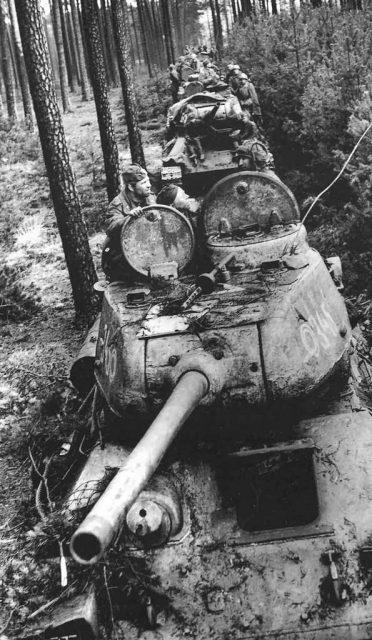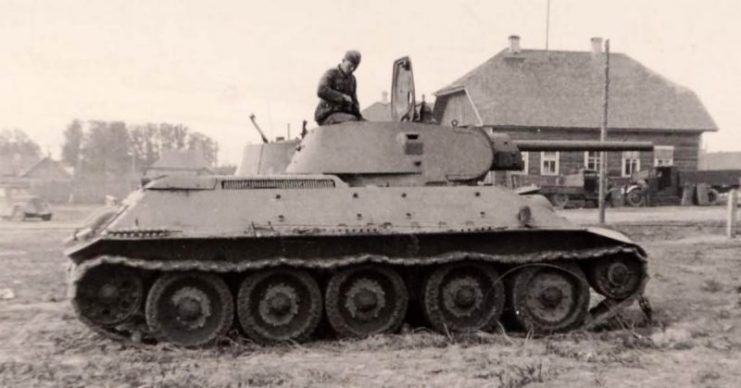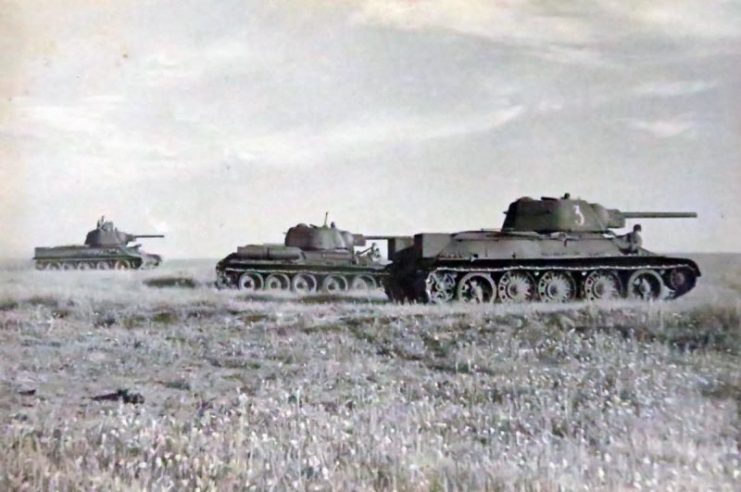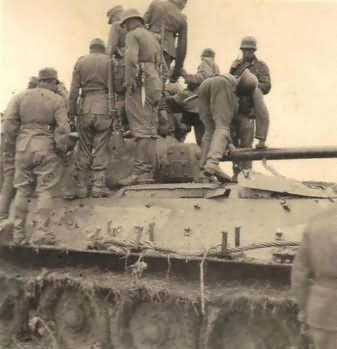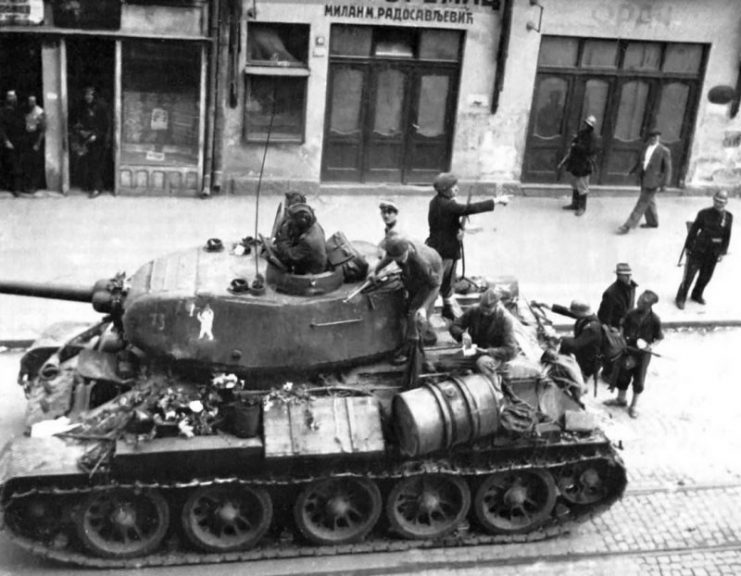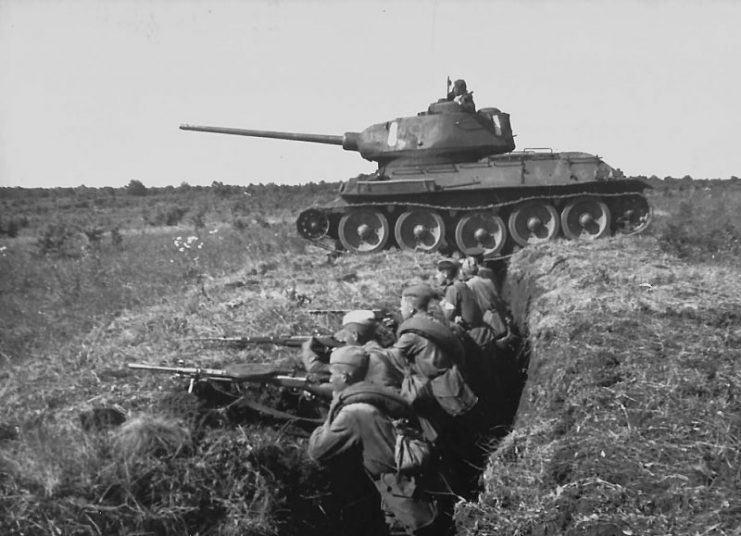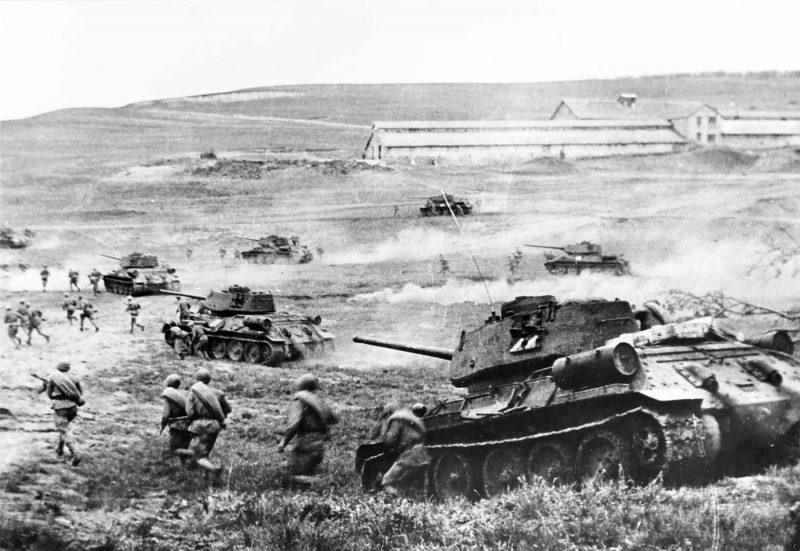One of the most important weapons in the Second World War, the T-34 medium tank was also one of the most influential designs in the history of tanks.
A Product of Mass Mechanization
Tanks were critical to combat in the Second World War, and all the combatant nations worked on developing better versions. The Soviets, with their massive program of mechanization, had been able to experiment with a wide array of designs in the 1930s. This taught the Soviet designers what did and didn’t work, leading to the T-34.
Building on the BT-7
The design work that led to the T-34 began in 1936. Engineers began from the basis of the BT-7, a capable light tank that had gone through repeated modifications as designers sought ways to improve it. For the T-34, the designers enlarged the hull, added an extra roadwheel, lengthened the suspension, and improved both engine and armament.
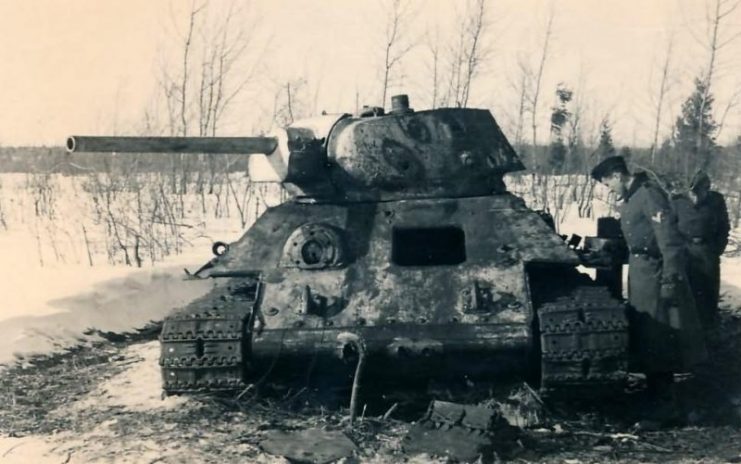
Pilot models of the T-34 were created at the Komintern Factory at Kharkov. Many other factories would be involved when it went into mass production.
Born in 1940
The T-34 went into production in May 1940. It continued in use throughout World War Two and beyond.
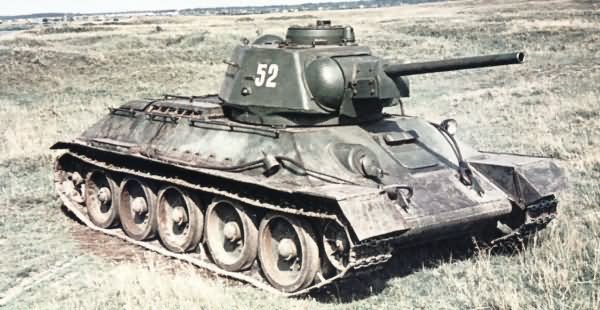
Massive Numbers
During the war, the Soviets relied on massing forces to defend their homeland and eventually overwhelm the Germans. The T-34 was perfect for mass production and huge numbers were produced – 39,698 in total.
However, production was almost stopped in the early days of the war on the Eastern Front. The German advance into Russia was so swift and decisive that it overran the tank arsenals. Through an incredible application of labor, the Soviets managed to evacuate every movable machine part from these factories, transporting them by rail deeper into the USSR.
There they set up new tank production lines, including the Uralmashzavod (Ural machine factory) at Nizhni Tagil. This factory churned out thousands of T-34s, keeping up the supply of tanks the Red Army needed.
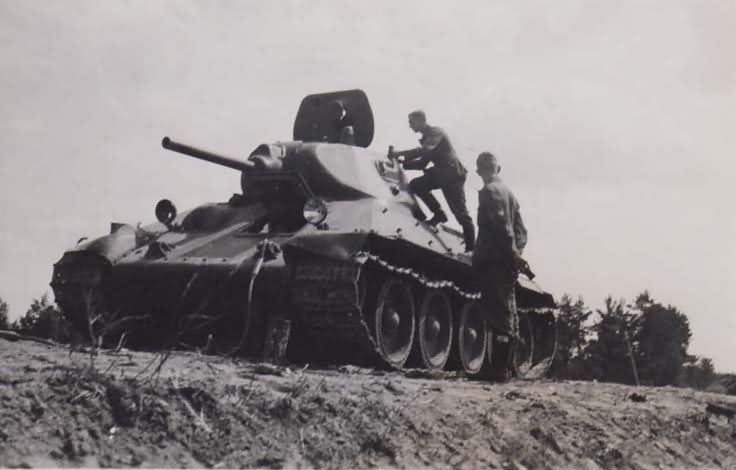
By 1943, there were 43 factories producing just two types of tanks – the T-34 and the heavier KV.
A Powerful Engine
One of the T-34’s most important features was its engine. This was a high-powered diesel design that was created at the Kharkov Locomotive Works. It was the result of five years of research and development all focused on the creation of one engine. It was both reliable and resistant to fire, making the tank better able to survive being hit.
Welded Armor
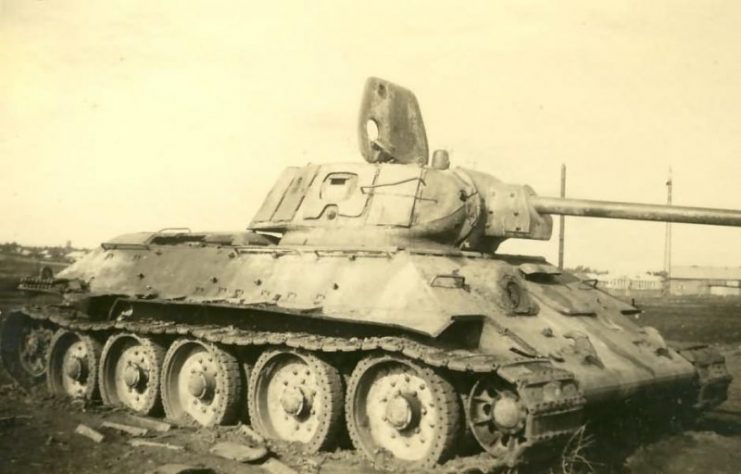
Many previous tanks had riveted armor. However, fighting in the Spanish Civil War and in border conflicts between China and Japan had tested the limits of this design and proven the vulnerability of a riveted tank. So instead of riveting, the T-34’s armor was joined by welding, to make it tougher.
The angle of the armor was also re-thought. It was carefully sloped, to avoid presenting a face at right angles to the trajectory of a shot against the tank. This made it far more likely that enemy shells would be deflected off.
Powerful Guns
Alongside its improved engine and armor, the T-34 carried a powerful weapon for a tank of its size – a high-velocity 76mm gun.
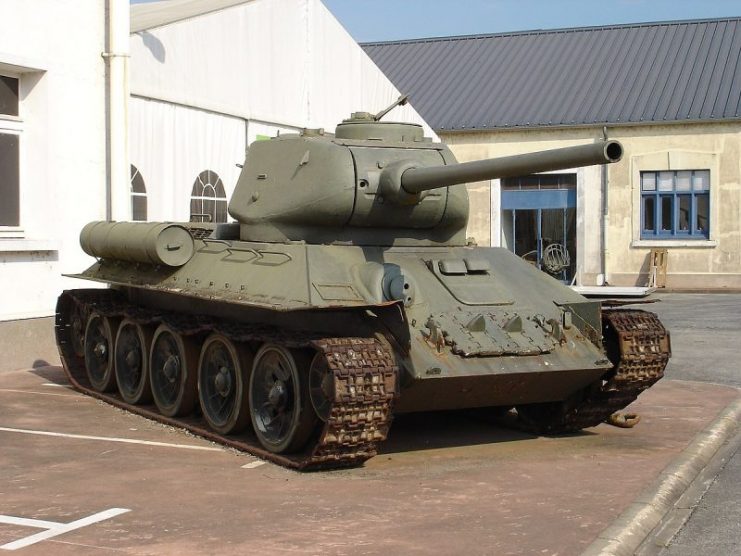
As the war progressed and German tanks improved, a heavier weapon was needed to penetrate their armor. The 76mm weapon was replaced with the D-5T 85mm anti-aircraft gun, which would prove as effective against tanks as it was against planes. At the time, the T-34/85 was one of the most powerful tanks in the world.
Supporting Weapons
As well as its main gun, the T-34 was equipped with two 7.62mm Degtyarev machine guns. One of these was mounted coaxially with the main gun, The other was fitted in the front right-hand side of the hull.
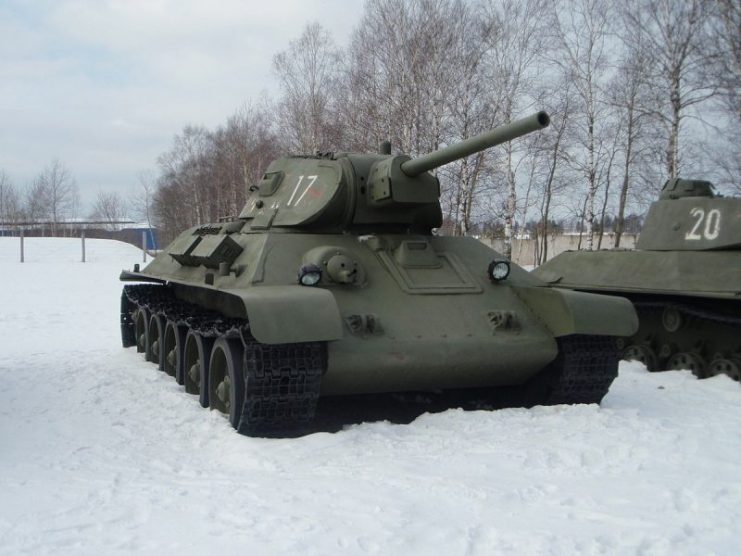
Improving Turrets
The turret on the first T-34 was cramped and limited in how far it could depress its gun. Like many features of the tank, it went through continual improvements over the course of service, creating a more spacious and better-protected turret.
Tracks for Soviet Weather
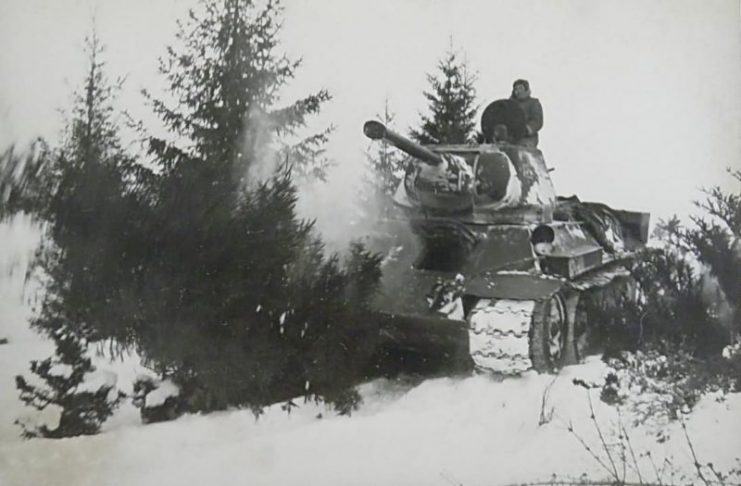
The importance of being able to function in bad weather had been proved to the Soviets when they invaded Finland in 1939 and many of their vehicles stopped working in the snow. While conditions in the USSR were seldom as trying as in the Finnish winter, the Soviet winter could also be grueling, and a tank needed to be able to get across mud and snow. The wide tracks of the T-34 were designed for this purpose.
Going International
During the Cold War, the Soviets exported the T-34 tank to their Warsaw Pact allies. The Czechs started producing their own T-34s in 1951 and the Poles did the same in 1953. The Polish vehicle incorporated several improvements not seen in the Russian model.
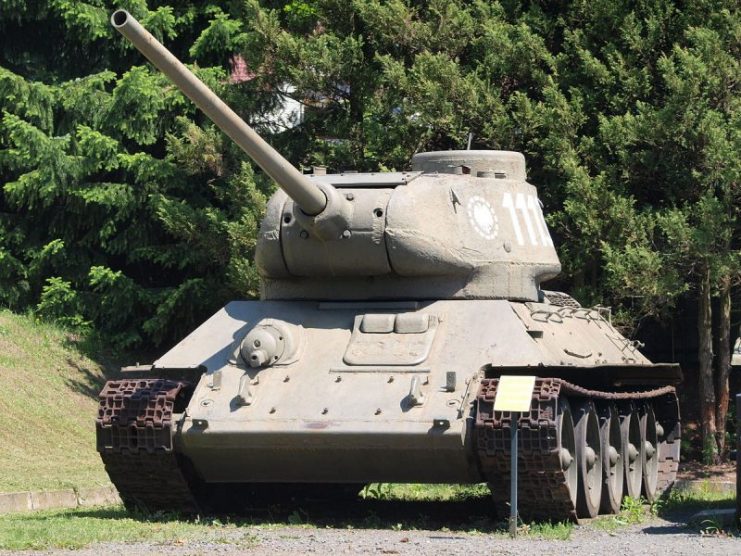
A Source of Variations
The T-34 saw many adaptations to its design over the course of its long career. It also became the foundation stone upon which a variety of other vehicles were built, by both the Soviets and their allies. These include at least six different armored recovery vehicles, built in the USSR, Czechoslovakia, East Germany, and Poland.
Like the BT-7 before it, the T-34 became the basis for designing other, more advanced tanks. The Soviet T-44 tank was based on the T-34, and in turn became the starting point for the T-54.
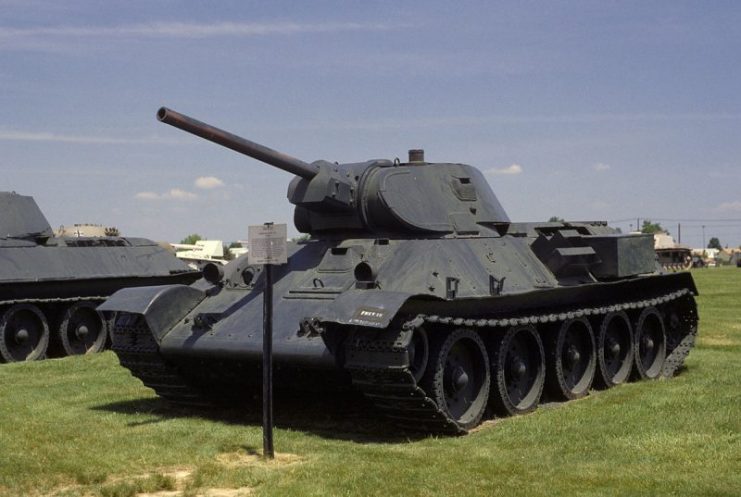
Fading from Glory
The effectiveness of the T-34 was such that it remained a mainstay of the Soviet army for a decade after the war. But by the mid-1950s, it had been surpassed by its descendant the T-54, and the Red Army began phasing it out in favor of that tank, with T-34s finally leaving Soviet service in the 1960s. It continued in service in other Communist countries for decades afterward, a testament to the enduring quality of this most influential of tanks.
Additional Photos –
